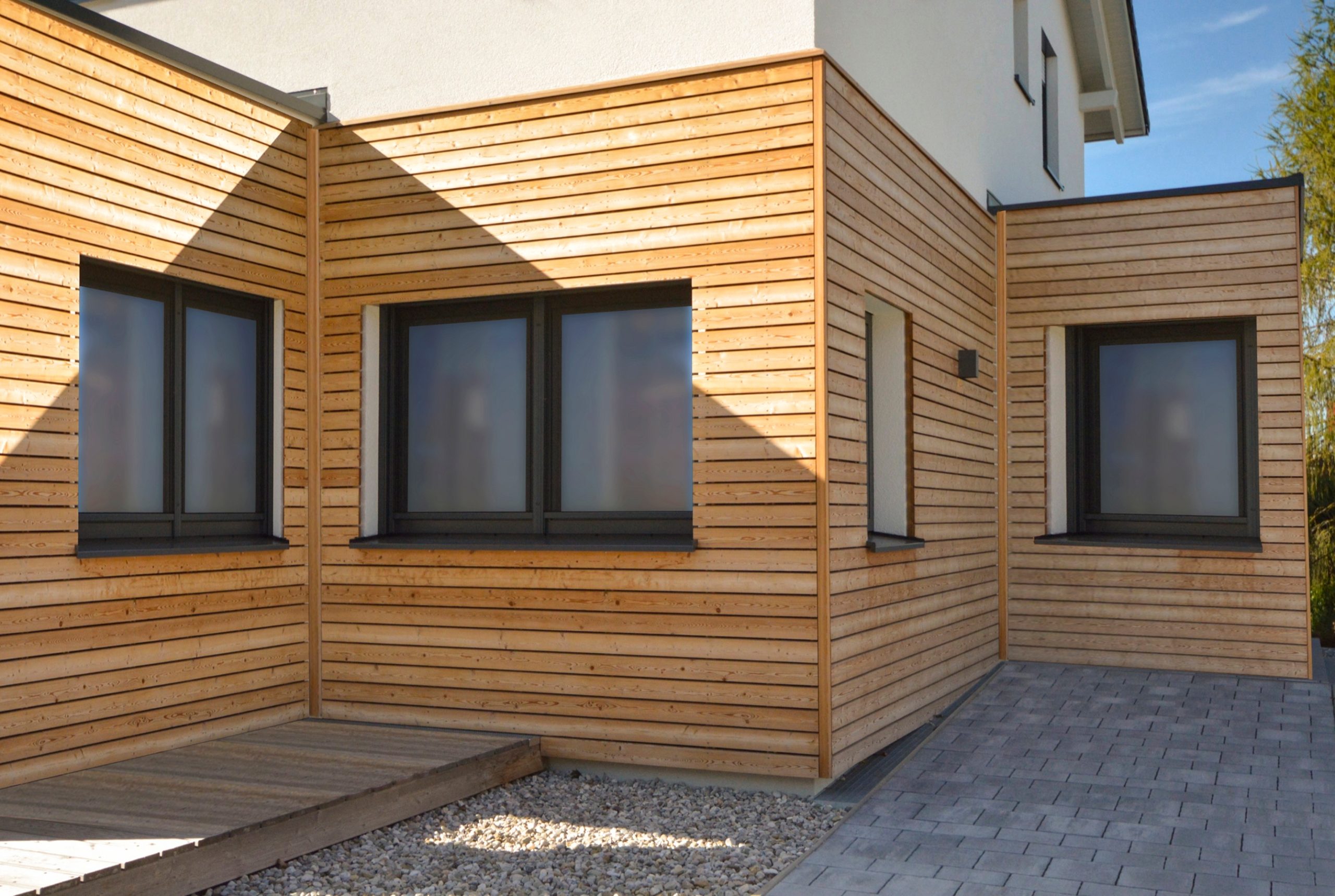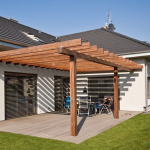Wood is on the rise in the construction sector. Many people think automatically about building with wooden blocks, the most known and important method of construction with wood today. But there are other methods of building wooden houses such as CLT (Cross Laminated Timber). In this case, instead of using a wooden frame for its construction, the CLT method is based on solid laminated wood panels, which provides a series of specific advantages.
In this blog, we will learn about the advantages and differences of each of the methods of building wooden houses. Construction with block and CLT wood. What will be the most suitable for your project?
What is construction with wooden blocks?
The construction with a wooden block, based on its technique on the use of predetermined wooden blocks, similar to bricks, which are placed on top of each other and are assembled by metal slats, pegs and snails that, when joined, form the walls and create airtight spaces inside.
The wooden blocks of this technique are made of solid wood (usually pine or eucalyptus) using industrial machinery. Afterwards, these wooden blocks are treated with fungicides and non-polluting insecticides to make them resistant and prevent them from deteriorating over time.

What is CLT wood?
CLT wood or cross laminated wood (Cross Laminated Timber), is a type of solid wood construction material that is manufactured by joining several layers of serrated wood in the form of boards. The wooden layers are placed at right angles to each other and are attached with structural adhesives to form large and stable panels. This cross-layered arrangement of the wooden layers provides greater resistance and dimensional stability in all directions, resulting in a resistant construction.

The differences between the construction of block and CLT wood houses:
- Docking simplicity:
Wooden blocks are designed to fit easily, which can simplify and accelerate the construction process on the site compared to CLT wooden panels, which often require a crane to be installed due to their large size and weight. This ease of coupling offered by wooden blocks allows construction projects to move faster and require less heavy equipment.
- Structural resistance:
The counterlaminated wood panels or CLT panels are characterized by being made from several layers of serrated wood arranged at right angle and glued together by structural adhesives. This cross-layer design offers many advantages in terms of resistance and stability.
The layout of the CLT wooden panels distributes the loads more evenly in all directions. This means that they can effectively withstand vertical loads (such as the weight of the upper floors) and side loads (such as wind and earthquakes).
Els blocs de fusta no poden suportar les mateixes càrregues pesades que els panells CLT. This can limit its use in tall buildings or structures that have to withstand heavy loads. For constructions that require a high load-resistant capacity, wooden blocks may need additional reinforcements, such as beams or steel pillars, to ensure structural stability. This can increase the complexity and cost of the project.
- Energy insulation and performance:
The CLT wooden panels offer better thermal and acoustic insulation because they are made up of large layers of wood very firmly stuck to each other. This technique allows wood to better block the passage of heat and sound.
On the other hand, wooden blocks can have more small spaces between them, where heat and sound can escape or enter more easily. These spaces are known as thermal bridges and mean that wooden blocks need additional materials to improve their insulation and achieve energy performance similar to CLT wooden panels.
- Fire resistance:
Wood is naturally good resistance to fire. When exposed to fire, the wood forms a carbonized layer that acts as a protective barrier of the inner layers, slowing the propagation of the flames. If you want to know more about wood and its relationship with fire, visit our website “The wood and the fire”
The fire resistance of the backwood or CLT and the wooden blocks varies depending on their structure and composition. The CLT wood, thanks to its wooden layers, forms a barrier that slows the spread of fire to the inner layers, allowing the wooden house to resist fire for longer.
However, wooden blocks also offer fire resistance, but gaps between wooden blocks can allow heat and flames to spread faster compared to CLT wood. Therefore, CLT technique is usually preferred in applications that require high fire resistance, such as high-rise buildings or structures exposed to a significant fire risk.
- Weight and architectural design:
CLT wooden panels are ideal for modern architecture because they allow to create innovative designs and open spaces without the need to use many additional columns or walls to sustain the structure. This is due to the fact that CLT wood is made of layers of wood that cling to each other, forming strong and stable panels. This characteristic of the CLT technique allows architects to design buildings with large open areas and with a modern and sustainable aesthetic.
CLT panels can withstand large structural loads, which allows them to be used in multi-story projects or in constructions where space and natural light are to be maximized. This flexibility of design makes CLT wooden panels highly valued in contemporary architecture, where it is sought to combine functionality, energy efficiency and modern aesthetics using mainly wood as construction material.
Wooden blocks do not offer the same capacity to create open spaces without supports as CLT panels. But wooden blocks can also be an advantage for special architectural constructions. In architectural projects, wooden blocks adapt well to styles of construction that require a more traditional or rustic look.
At Pallars Fustes, you can choose between the construction of projects with wood in blocks or with the CLT technique, each with its own characteristics and advantages. Both options allow the construction to be adapted to the specific needs of the project and to the aesthetic preferences of the owners, thus contributing to the diversity and sustainable development of the Pallars Fustes area.
Find out more about wood construction on our website!




